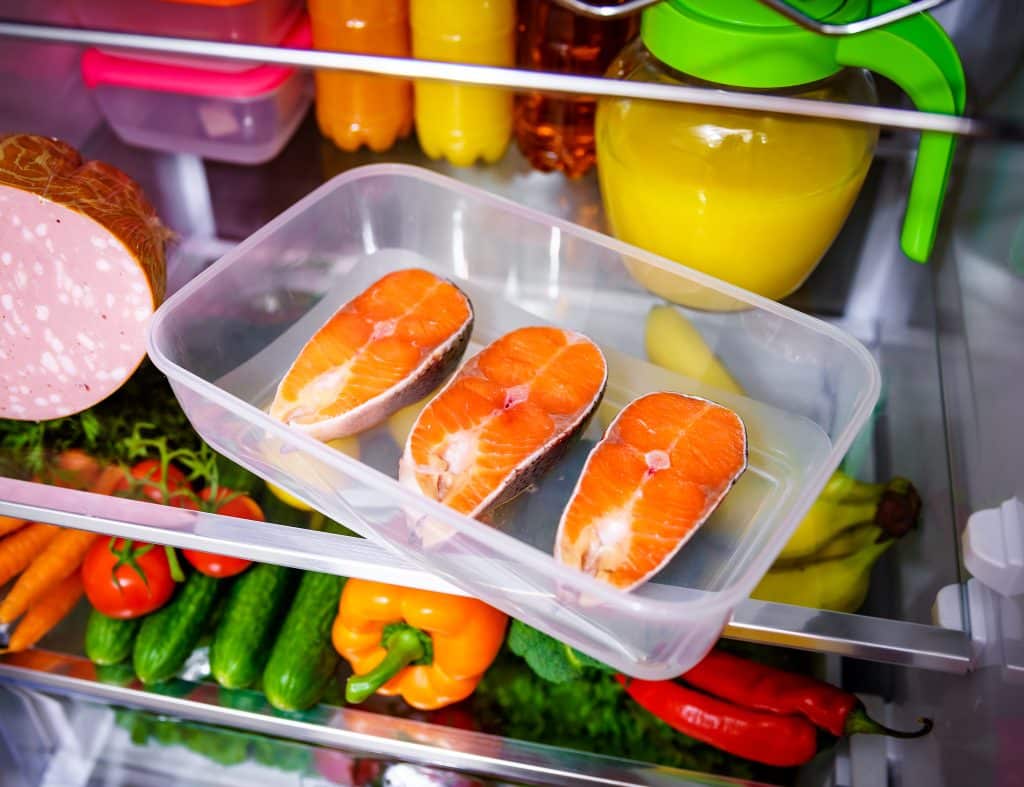Seafood is a delicious and nutritious source of protein, omega-3 fatty acids, vitamins, and minerals. However, seafood can also be a source of foodborne illness if not handled, stored, and prepared properly. To enjoy the benefits of seafood without risking your health, you should follow some basic tips for handling seafood safely.SEE MORE: Popular Kitchen Mistakes That Make Our Lives More Difficult
1. Buy fresh and high-quality seafood

The first tip is to buy fresh and high-quality seafood from reputable sources. You should always check the appearance, smell, and texture of the seafood before buying it. Fresh fish should have clear and shiny eyes, firm and elastic flesh, red gills, and a mild and fresh odor. Shrimp, scallops, and lobsters should have clear and pearl-like flesh, and live shellfish should have closed shells or close when tapped. You should also look for tags or labels on the seafood that indicate the source, date, and certification of the product. Avoid buying seafood that is discolored, slimy, mushy, or has a strong or sour smell.
You can see Tips For Handling Seafood You Should Know at THIS OUR VIDEO
2. Keep seafood cold

The second tip is to keep seafood cold and store it properly. You should always refrigerate or freeze seafood as soon as possible after buying it. If you are transporting seafood from the market, use a cooler with ice or frozen gel packs to keep it cold. Store seafood in the coldest part of the refrigerator, preferably on ice, and use it within one to two days. If you plan to use seafood later, wrap it tightly in moisture-proof bags and freeze it. Thaw frozen seafood in the refrigerator, under cold running water, or in the microwave, but never at room temperature. Cook thawed seafood as soon as possible and do not refreeze it.
3. Keep seafood clean

The third tip is to handle and prepare seafood cleanly and carefully. You should always wash your hands, utensils, cutting boards, and work surfaces before and after handling raw seafood. You should also keep raw and cooked seafood separate to avoid cross-contamination. Use different knives, plates, and containers for raw and cooked seafood, and wash them thoroughly with hot soapy water. When cooking seafood, follow the recommended time and temperature guidelines to ensure that it is cooked thoroughly and safely. You can use a food thermometer to check the internal temperature of the seafood, which should reach at least 145°F for 15 seconds. You can also check the color and texture of the seafood, which should be opaque and flaky for fish, and firm and pink for shrimp and lobster.
4. Additional resources

Seafood is a versatile and healthy food that can be prepared in many ways, such as grilled, baked, fried, steamed, or raw. You can also add seafood to salads, soups, sandwiches, or pasta dishes. Seafood can provide many health benefits, such as lowering the risk of heart disease, improving brain function, and supporting the immune system. However, you should also be aware of the potential risks of seafood, such as allergies, mercury, and toxins, and choose seafood that is low in these contaminants. You should also follow the advice of the FDA and EPA about eating fish for women who are or might become pregnant, breastfeeding mothers, and young children. Seafood is a wonderful food that can be enjoyed by everyone, as long as it is handled, stored, and prepared safely.
I hope these tips help you handle seafood safely and enjoyably!

